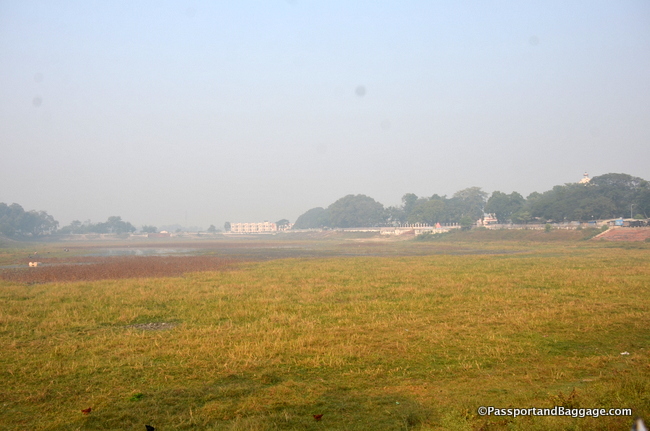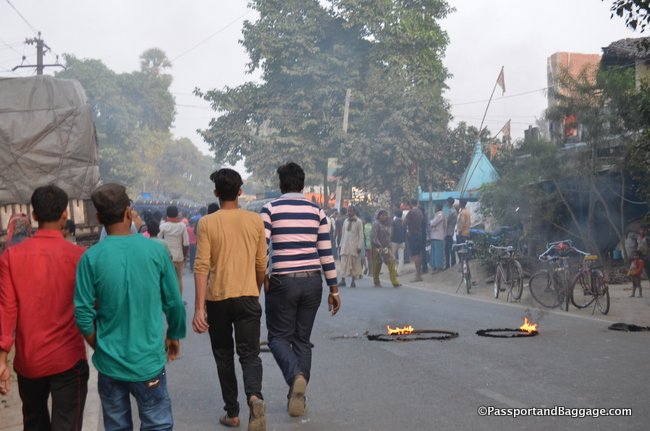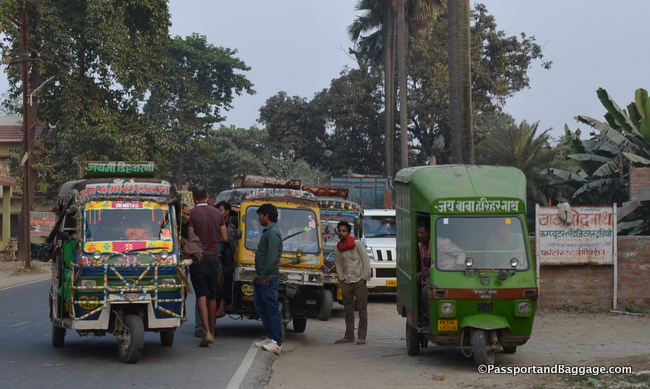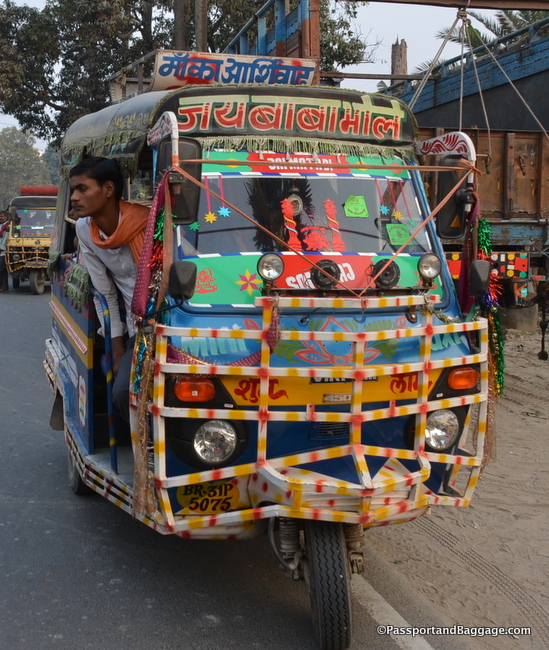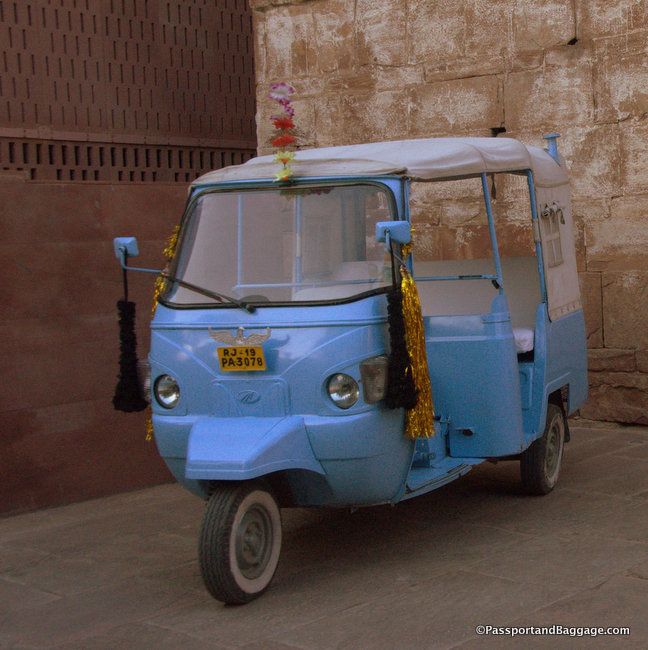Vaishali, India
November 18-20 2018
I am in Vaishali as part of the 2nd Annual Tipitaka Chanting Ceremony. If you are interested in that you can read about last years ceremony here. This is another adventure.
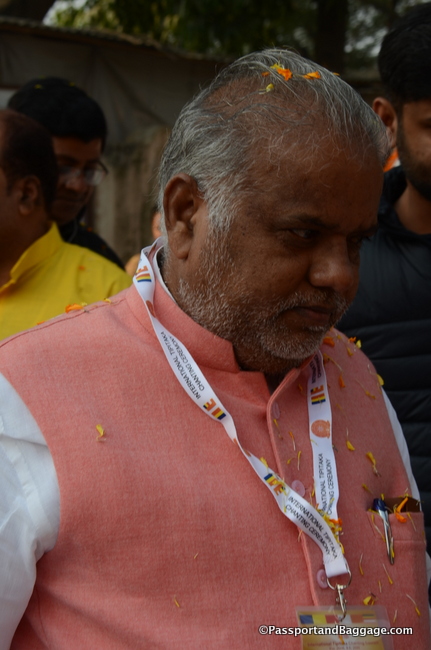
Shrawan Kumar is a politician from the Indian political party Janata Dal. He is currently the Minister of Rural Development and Parliamentary Affairs in the Cabinet of the State of Bihar.
Today I came across two protests. The first was about rural water and politics. The protesters were very polite, in that, even though the blocked the roads, they let people pass. They also never shouted during the Tipitaka opening ceremony, only when the minister left his car and then returned to his car.
From what I understood, the protest was against the fact that there was no longer water in a very famous pool in Vaishali. It is felt that much of the region’s dollars are going to promote tourism surrounding the Relic Stupa and nothing is being done to preserve the coronation tank, Abhishek Pushkarini.
The sacred waters of the coronation tank Abhishek Pushkarini once anointed ancient Vaishali Rulers.
Toilets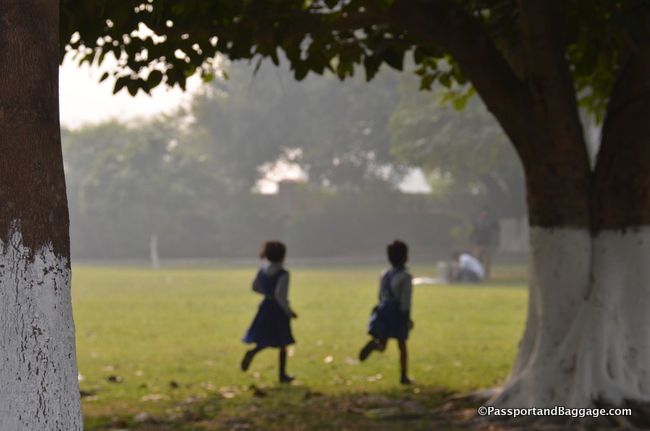
These two little girls are running back to the ceremony after having used the bushes for a toilet. The boys used the same bushes but stood out in the open peeing on them. Since watching men empty their bladders along the side of the road is so common I assume the boys have absolutely no modesty regarding their actions.
The use of the trees is far superior to the use of a public toilet in India. I was given a packet of wipes the first day, that smelled of roses. Not roses, but that rose smell that you find in the air freshener aisle of an un-airconditioned truck stop in the middle of the desert. I prefer it to the smells of Indian public toilets.
In 2014 President Modi began the Clean India programme, known locally as the Swachh Bharat Abhiyan mission, the reason is that India accounts for more than half of the world’s 1.1 billion people who routinely relieve themselves in fields, beaches, and other open spaces. 65% of rural India defecates in the open, a population larger than that of the United States.
So-called open defecation contaminates food and drinking water, and spreads diarrheal diseases that cause chronic malnutrition and childhood stunting – a burden the World Bank estimated costs India 6.4 percent of its gross domestic product. One in every ten deaths in India is blamed on open defecation.
While this program looks great on campaign posters it does not seem to be working, however, the program has certainly helped the building trades. Suppliers of sanitaryware and tiles sales are predicted to grow about 11 percent annually through 2022
The problem is, you still have to get the people to use toilets.
According to an article in the Washington Post:
BEED, India — The patrols started at dawn, and the villagers scattered, abandoning their pails of water to avoid humiliation and fines.
Every morning in this district in rural India, teams of government employees and volunteer “motivators” roam villages to publicly shame those who relieve themselves in the open. The “good-morning squads” are part of what one official called “the largest behavioral-change program anywhere in the world.”
The reason for much of this public defecation is the lack of toilets in households. The government has vowed to install 111 million, yes one hundred and eleven million, toilets by the end of 2019.
I was told by some Indians, that, yes they are installing them, but they are not hooked up to any plumbing, all I can say is, yes that sounds like India.
There are many questions as to why this is a problem, and why have the Indians not started to use pits or compostable toilets. Here is an excellent YouTube video to help answer some of your questions I have not addressed.
The Gates Foundation has also gotten involved in the problem with $350 composting toilets that use worms.
Tuk Tuks
This was the second protest I encountered in one day. Yes, those are tires burning in the streets, as though the air in India isn’t toxic enough.
This protest was due to a Tuk Tuk that had killed a small boy. In India, when the people in villages want to get the attention of the government they block a major road and wait until an official shows up to negotiate what they want. In this case, money for the family.
All of this got me thinking about Tuk Tuks and their drivers, as that particular driver must have been as poor as the family of the child he killed, and insurance would have been non-existent.
It is easy to find information about Tuk Tuks, or auto-rickshaws as they are called by the government, for big cities, I was unable to find figures for rural areas. In Mumbai, there were 118,477 auto-rickshaws in March of 2011. In Mumbai the stated license fee in 100 rupees, about $1.50 US.
According to a government report: Most permit-holders hold onto their permits or pass them down through the family. Because of this, it is difficult and expensive for newcomers to get into the auto-rickshaw business. Although it is illegal to use a permit that is not under your name, many drivers lease permits from permit-holders for a period of 5 to 10 years. Alternately, drivers pay daily rent to permit-holders, which driver surveys found could be up to Rs. 300 ($4.17) with an average of approximately Rs 160 ($2.22) daily.
I then tried to determine what a Tuk Tuk driver makes. I found this on Quora
“My elder brother owns one. His auto works on both shift each shift driver pays him 250 which means each day he earns 2 × 250 = 500. ($6.95) And Monthly he earns around 15000 ($208). 3000 to 4000 ($55) goes in maintenance and 5000 is paid as EMI (Equated Monthly Installment). Hence with an investment of just 150000 ($2100), one can earn 7000 to 8000 ($112) monthly which is far better than real estate. (the answer was dated 2016).”
I asked a local in Bodhgaya what the average driver makes and he said around $20US a day.
There are two types of auto rickshaws in India. In older versions, the engines were below the driver’s seat, while in newer versions engines are in the rear. They normally run on gasoline, CNG, or diesel.
While Tuk Tuks are found all over the world, Bajaj Auto of Pune, India is the world’s largest auto rickshaw manufacturer.
An interesting note about the strike. We left our car and walked through the protest to the other side. We had an important meeting to get to and it was another 4 kilometers down the road. We decided to grab a Tuk Tuk. Several passed us shaking their head vehemently NO. I assumed they were on a sort of strike, but I was told that in fact, they were frightened about being beaten up and were fleeing the scene as quickly as possible. We eventually found a driver, who made a handsome fare that night.
The following day we headed out of Vaisali for Bodhgaya. All traffic was stopped due to a horrible car accident. We sat for four hours waiting for officials to come and handle the situation. Apparently, in these small villages, the police do not come for fear for their lives. Politicians come and work out who is guilty right on the spot. What a system.
We were told to not get off the bus, we were not part of the village and it was not safe. There was nothing to do but watch the world go by, especially this little truck with two horses packed in with all the cargo and a passenger.
India truly is a world unto its own.
